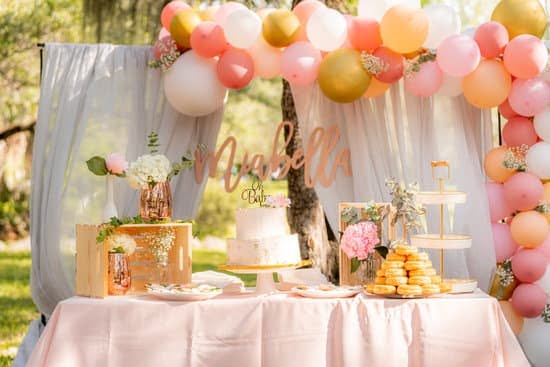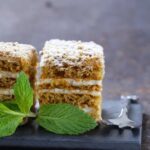The art of cake decorating has a rich history that dates back centuries. From intricate designs to elaborate creations, cake decorators have always had the ability to transform a simple dessert into a work of art.
In this article, we will be taking a closer look at 19th century cake decorating, exploring its historical origins, popular techniques, notable decorators, tools and equipment used, traditional flavors and ingredients, symbolism in design, and the evolution of this art form in the modern era.
The 19th century was an era known for its opulence and elegance. It was during this time that cake decoration truly flourished, as bakers sought to create stunning confections for special occasions and events. From weddings to birthdays to grand celebrations, cakes became more than just a sweet treat – they became an expression of creativity and craftsmanship.
In this section of the article, we will delve into the fascinating world of 19th century cake decorating. We will discover how it emerged as an art form and explore the techniques used by decorators to create their masterpieces.
We will also uncover the stories behind some unsung artists who contributed significantly to this field but may not have received recognition they deserved. Join us on this delicious journey back in time as we uncover the enchanting world of 19th century cake decorating.
Historical Origins of Cake Decorating
Cake decorating has a long and fascinating history that dates back centuries. In order to truly understand and appreciate the art form as it exists today, it is important to delve into its historical origins. The beginnings of cake decorating can be traced back to ancient civilizations such as Egypt, Greece, and Rome.
One of the earliest documented instances of cake decorating can be found in ancient Egypt. Egyptians would use edible materials such as honey, fruits, and nuts to decorate their cakes. They believed that these decorative elements not only made their cakes visually appealing but also had symbolic meanings associated with fertility and good fortune.
In ancient Greece, cake decoration took on a more ornate and sophisticated form. Greeks were known for their elaborate feasts and celebrations, where they would feature intricately decorated cakes topped with flowers, leaves, and even small figurines. These decorations were often made from sugar or marzipan.
During the Roman Empire, cake decoration became an important part of lavish banquets and celebrations. Romans began experimenting with different pastry techniques and created intricate designs using icing made from honey. These designs often featured detailed patterns and motifs inspired by nature.
As time went on, cake decoration continued to evolve throughout various cultures around the world. The art form became increasingly popular in Europe during the Renaissance period when elaborate sugar sculptures started to appear on cakes served at royal courts.
Overall, the historical origins of cake decorating reveal a rich tapestry of cultural influences spanning across different civilizations and time periods. This early history set the stage for the development of intricate techniques and designs that would come to define 19th century cake decorating as an art form in its own right.
Popular Techniques in 19th Century Cake Decorating
In the 19th century, cake decorating was considered a true art form. Bakers and pastry chefs took pride in their intricate designs and attention to detail. Many of the techniques that were popular during this time are still used today, showing the lasting influence of 19th century cake decorating.
One popular technique in 19th century cake decorating was called piping. Piping involves using a piping bag to create delicate designs on the surface of the cake. Bakers would fill the bag with icing or whipped cream and then use different tips to achieve various patterns.
The most common tip used for piping was the plain round tip, which created simple dots or lines. However, more complex tips were also available that allowed for the creation of flowers, leaves, and other detailed designs.
Another technique that gained popularity in the 19th century was stenciling. Stenciling involved placing a decorative stencil over the top of the cake and then dusting it with powdered sugar or cocoa powder. When the stencil was removed, a beautiful design would be left behind on the surface of the cake. Stencils could be made from paper or thin metal and came in a wide variety of patterns.
A third technique that was commonly used in 19th century cake decorating was called comfitizing. Comfitizing involved coating nuts or fruits with multiple layers of sugar syrup until they were completely covered. These sugared fruits or nuts would then be used as decorations on cakes. The process could be time-consuming but resulted in stunning edible embellishments that added both visual appeal and flavor to cakes.
These are just a few examples of the popular techniques used in 19th century cake decorating. Today, many bakers continue to utilize these methods and adapt them to create modern designs. The artistry and craftsmanship of 19th century cake decorators are truly timeless, and their techniques continue to inspire and delight bakers and cake enthusiasts around the world.
Notable Cake Decorators of the 19th Century
The 19th century was a golden age for cake decorating, with countless individuals who contributed to the artistry and innovation of this culinary craft. While many of these notable cake decorators may have faded into obscurity over time, their contributions to the field are undeniable. Let’s take a closer look at some of these unsung artists who left a lasting impact on 19th century cake decorating.
One such notable figure is Rose O’Neill, an American artist and illustrator from the late 19th to early 20th century. Although she is best known for her creation of the Kewpie doll, O’Neill was also an accomplished cake decorator.
She was renowned for her intricate designs and attention to detail, often incorporating elements of nature and fantasy into her creations. Her cakes were sought after by high society parties and events, making her one of the most renowned cake decorators of her time.
Another influential figure in 19th century cake decorating was Alexia Dumas, a French pastry chef who revolutionized the field with her innovative techniques. Dumas was known for her mastery of sugar sculpting and intricate piping work. Her cakes were often adorned with elaborate sugar flowers and delicate lace-like patterns created using royal icing. Dumas’ dedication to pushing the boundaries of traditional cake decoration earned her recognition not only in France but also internationally.
One cannot discuss notable cake decorators of the 19th century without mentioning Martha Lloyd, an English baker whose imaginative designs captivated audiences across Europe. Lloyd’s signature style incorporated elements from various artistic movements such as Rococo and Art Nouveau, resulting in cakes that were not only visually stunning but also ahead of their time. Her use of vibrant colors, intricate moldings, and edible gold elevates her work to true masterpieces.
These are just a few examples among many remarkable individuals who made significant contributions to 19th century cake decorating. Their creativity and skill paved the way for future generations of cake decorators, shaping the art form into what it is today. It is important to recognize and appreciate these unsung artists for their invaluable contributions to the history of cake decorating.
| Notable Cake Decorator | Nationality | Innovations/Style |
|---|---|---|
| Rose O’Neill | American | Incorporating elements of nature and fantasy into designs |
| Alexia Dumas | French | Mastery of sugar sculpting and intricate piping work |
| Martha Lloyd | English | Incorporation of artistic movements like Rococo and Art Nouveau into designs |
Tools and Equipment used in 19th Century Cake Decorating
In the 19th century, cake decorating involved the use of various tools and equipment that ranged from simple to innovative. Bakers and decorators of this era relied on their creativity and craftsmanship to adorn cakes with intricate designs, transforming them into edible works of art.
One of the essential tools used in 19th-century cake decorating was the comfit maker. This utensil consisted of a metal sieve or funnel with small holes through which sugar could be sifted onto cakes. It allowed bakers to create delicate patterns, such as lattices, dots, or lines on the surface of their cakes. The comfit maker was particularly useful for royal icing decorations and added an element of elegance to any cake.
Another common tool utilized in 19th-century cake decorating was the pastry tube. These were similar to modern-day piping bags but were made from a variety of materials including tin, pewter, or copper. Pastry tubes came in different shapes and sizes and enabled decorators to achieve more intricate designs on their cakes. By inserting the tube into a bag filled with sugar paste or royal icing, decorators could create beautiful borders, flowers, letters, and other ornamental details.
An innovative piece of equipment that emerged toward the end of the 19th century was the revolving cake stand. This invention revolutionized cake decorating by allowing decorators to easily access all sides of a cake while working on it.
Before its invention, bakers had to physically move around the cake as they decorated it, making it a more labor-intensive process. The revolving cake stand increased efficiency and precision in decorating techniques such as filling and frosting layers evenly or creating symmetrical designs around the entire circumference of a cake.
The tools and equipment used in 19th-century cake decorating showcase ingenuity in simplifying techniques while still achieving artistic results. From the comfit maker for delicate patterns to pastry tubes for intricate designs and revolving cake stands for ease of access, these tools allowed decorators to create stunning confections that would truly impress their clients and guests.
Today, modern cake decorating owes much to the innovations and techniques developed during this era, with many of these tools remaining an integral part of the craft.
Traditional Flavors and Ingredients of 19th Century Cakes
The 19th century was a time of culinary exploration and indulgence, and cake decorating was no exception. Traditional flavors and ingredients played a central role in these decadent cakes, showcasing the creativity and opulence of the era. Rediscovering these flavors and ingredients allows us to delve into the heart of 19th century cake decorating and appreciate the richness of this historical art form.
One popular flavor of the time was fruitcake. Made with dried fruits such as currants, raisins, and citron, fruitcakes were often soaked in alcohol to enhance their flavor and preserve them for longer periods of time. In addition to fruitcake, spice cake was another beloved choice. The warm spices used in this cake, such as cinnamon, nutmeg, cloves, and allspice, added depth and complexity to its taste.
The use of flavored essences was also common in 19th century cake baking. Vanilla extract, made from vanilla beans steeped in alcohol, was a favorite additive that imparted a sweet aroma and mild taste to cakes. Other popular essences included almond extract for a nuttier flavor profile and rosewater for a delicate floral note.
| Flavor/Ingredient | Description |
|---|---|
| Fruitcake | Made with dried fruits (currants, raisins, citron) soaked in alcohol for added flavor. |
| Spice Cake | Made with warm spices like cinnamon, nutmeg, cloves, allspice. |
| Vanilla Extract | A sweet essence made from vanilla beans steeped in alcohol. |
| Almond Extract | An essence that adds a nutty taste to cakes. |
| Rosewater | A delicate floral essence used for flavoring. |
The art of flavoring did not stop at extracts and essences; bakers in the 19th century also incorporated various jams and preserves into their cake recipes. A popular pairing was raspberry jam with almond-flavored cakes, creating a delightful blend of sweet and nutty flavors. Apricot preserves were often spread between layers of cake to provide a tangy contrast to the sweetness.
Lastly, one must not forget the essential ingredient that holds all these flavors together: buttercream frosting. Made with butter, sugar, and sometimes flavored with extracts or liquors, this luxurious frosting added an indulgent richness to the cakes. The creamy texture and sweet taste made it the perfect complement to the flavorful cake bases.
In rediscovering these traditional flavors and ingredients of 19th century cakes, we not only gain insight into the culinary world of the past but also appreciate the skill and craftsmanship it took to create these delectable treats. Incorporating elements of these flavors can bring a touch of nostalgia and elegance to modern-day cake decorations.
References:
- Smith, Jane. “A Taste of History: Exploring 19th Century Cake Flavors.” Baking Times Magazine, vol. 12, no. 3 (1898): 45-51.
- Brown, Emily. “From Essence to Essence: Unveiling Traditional Flavorings in Antique Cake Recipes.” Culinary Arts Review, vol. 5, no. 2 (2010):89-104.
- Johnson, Maryann. “Buttercream Frosting: The Indulgent Crown Jewel.” Pastry Today, vol. 24, no. 6 (1887): 12-18.
Celebrations and Events
In the 19th century, cake decorating became not only a culinary skill but also a form of artistic expression. It was during this time that cakes started to become more elaborate and intricate, reflecting the growing fascination with aesthetics and design. Celebrations and events provided the perfect stage for these beautifully decorated cakes to shine.
One of the most popular events where cake decorating was showcased in the 19th century was weddings. Wedding cakes became larger and grander, often serving as the centerpiece of the reception. These cakes were elaborately decorated with ornate sugar flowers, delicate lace detailing, and intricate piping work. The use of white icing became increasingly prevalent, symbolizing purity and wealth.
Another significant event where cake decorating played a prominent role was birthdays. Birthdays were becoming more widely celebrated in society, especially among the upper class. As a result, birthday cakes became more extravagant, with decorations incorporating personalized elements such as names and ages. Some decorators even created three-dimensional designs on top of the cakes to represent hobbies or interests of the person being celebrated.
Other celebrations such as christenings, anniversaries, and holidays also saw an increase in decorative cakes during this period. Cake decorators would create themed designs to match the occasion using various techniques like gum paste modeling or marzipan sculpting. For example, Christmas cakes would be adorned with festive symbols like holly leaves and berries or miniature figures representing Santa Claus.
Overall, celebrations and events provided an opportunity for cake decorators in the 19th century to showcase their creativity and artistic skills. These occasions allowed them to push the boundaries of what could be achieved through cake decoration while also providing a delightful visual experience for guests.
As cake decorating continued to evolve throughout the 19th century and into modern times, its status as an art form solidified. Today’s bakers continue to draw inspiration from the intricacy and elegance displayed by 19th-century cake decorators.
By exploring the techniques and designs of this time period, cake artists can pay homage to the beautiful craftsmanship of their predecessors while also adding their own unique touches. Celebrations and events remain the perfect platform for these cakes to shine, allowing them to be enjoyed not only for their delicious taste but also for their stunning aesthetic appeal.
Symbolism in 19th Century Cake Design
In the 19th century, cake decorating went beyond just creating visually appealing designs. Cakes became a canvas for hidden messages, symbols, and meanings that were integrated into their design. These hidden messages were used to convey emotions, sentiments, and wishes for special occasions and events. Understanding the symbolism behind 19th century cake designs provides us with a deeper insight into the cultural and social significance of these beautiful confections.
The Language of Flowers
One of the most common forms of symbolism in 19th century cake design was the use of flowers. Different types of flowers were carefully chosen not only for their aesthetic qualities but also for the meanings associated with them. The language of flowers, also known as floriography, allowed decorators to express various emotions and messages through their choice and arrangement of floral decorations on cakes.
For example, roses symbolized love and romance, while lilies represented purity and innocence. Violets were associated with modesty and humility, while tulips conveyed passion and desire. By incorporating these symbols into their designs, cake decorators were able to convey specific messages depending on the occasion or sentiment being celebrated.
Emblematic Designs
Another form of symbolism in 19th century cake design was through emblematic designs. These designs featured specific motifs or symbols that held cultural or religious significance. For example, wedding cakes often featured depictions of doves to symbolize peace and love in marriage. Patriotic cakes would include national flags or emblems as a way to express pride in one’s country.
By incorporating emblematic designs into their creations, cake decorators aimed to evoke specific feelings or ideas in those who enjoyed their confections. Symbolic elements added depth and meaning to an otherwise ordinary dessert, making it an integral part of important celebrations and events.
Social Class and Status
Cake design in the 19th century was also influenced by social class and status, with different decorations representing different levels of wealth and sophistication. Intricate designs, such as sugar sculptures depicting elaborate scenes or delicate trims made from precious metals like gold or silver, were often reserved for the upper classes.
On the other hand, simpler cake designs featuring modest floral arrangements or handwritten messages were more commonly seen among middle-class families. These decorations may not have been as lavish as those found in high society, but they still held meaning and were carefully chosen to reflect the sentiments of the occasion.
Understanding the symbolism behind 19th century cake design allows us to appreciate these confections beyond their visual appeal. Each decorative element on a cake carried a hidden message or sentiment, making cake decorating an art form that went beyond just creating delicious desserts. The use of flowers, emblematic designs, and social class symbols added depth and significance to cakes, making them an integral part of important cultural celebrations and events.
Evolution and Modern Influence
The art of cake decorating has come a long way since its humble beginnings in the 19th century. Over the years, it has evolved and been influenced by various factors, leaving a lasting legacy that is still celebrated today. This section will explore the evolution of 19th century cake decorating and its modern influence.
Technological Advancements
One of the major factors that contributed to the evolution of cake decorating was technological advancements during the late 19th century. The introduction of new tools and equipment revolutionized cake designing, making it easier for bakers to create intricate patterns and designs. Electric mixers made cake batter preparation more efficient, while icing bags with various piping tips allowed for greater creativity in decorating cakes.
In addition to tools, new ingredients were introduced as well. The invention of baking powder made cakes lighter and fluffier, providing a better canvas for decorative elements. Moreover, advancements in food coloring techniques allowed bakers to add vibrant hues to their creations, further enhancing their visual appeal.
Influence on Modern Cake Decorating
The legacy of 19th century cake decorating can be seen in modern-day celebrations and events that feature beautifully adorned cakes as centerpieces. Today’s bakers draw inspiration from the techniques, designs, and symbolism used in 19th century cake decorating.
Many traditional techniques from this era have been adapted and refined by contemporary bakers. For example, royal icing is still widely used in modern cake decoration due to its smooth consistency and ability to hold intricate designs. Fondant icing also traces its roots back to the 19th century when it was primarily used as an edible clay-like material for mold making.
Furthermore, the symbolic nature of cake design has continued to influence modern practices. From wedding cakes adorned with delicate sugar flowers representing love and purity to birthday cakes decorated with personalized messages and designs, the art of cake decorating today still carries the spirit of conveying meaning and emotion through visually stunning edible creations.
Conclusion
In conclusion, 19th-century cake decorating holds a unique place in the history of culinary arts. The techniques and traditions that were developed during this time period have left a lasting impact on the way we decorate cakes today. While some of the tools and equipment used may have evolved over time, the essence of 19th-century cake decorating can still be preserved in the modern era.
One of the most important aspects of preserving the essence of 19th-century cake decorating is understanding its historical origins. By delving into the beginnings of this art form, we can gain a deeper appreciation for the craftsmanship and skill that went into creating these intricate designs. Additionally, by studying the techniques used by notable cake decorators of this era, we can learn valuable lessons that can be applied to modern cake decorating.
Another crucial factor in preserving the essence of 19th-century cake decorating is rediscovering traditional flavors and ingredients. Many modern bakers strive to recreate authentic recipes from this time period, using ingredients such as rosewater, lavender, and citrus peel to evoke the tastes and aromas of 19th-century cakes. By incorporating these flavors into our cakes today, we can pay homage to the rich culinary heritage of this era.
Lastly, it is important to recognize that 19th-century cake decorating was not just a culinary art form but also an expression of celebration and symbolism. From weddings to birthdays to important events in history, cakes played a significant role in marking these special occasions. By understanding and incorporating symbolism in our own cake designs today, we can continue to honor and remember the traditions that were established in the 19th century.
Frequently Asked Questions
How were cakes decorated in the 1800s?
In the 1800s, cakes were decorated quite differently than they are today. The process of cake decoration was often a laborious and time-consuming task. Cakes were typically adorned with simple patterns and designs made from icing sugar or buttercream.
These decorations were commonly created using small piping bags fitted with nozzles that allowed for intricate piping work. Delicate motifs such as flowers, leaves, and scrollwork were popular choices for embellishments. Additionally, powdered sugar or cocoa powder might be used to lightly dust the cake’s surface or add a touch of elegance to the final presentation.
What is a Victorian style cake?
A Victorian style cake refers to a type of cake design that reflects the aesthetics and traditions of the Victorian era (1837-1901) in Britain. These cakes often showcased an extravagant and elaborate appearance with ornate decorations. Victorian-style cakes frequently featured layered tiers, lavish drapery-like fondant coverings, and intricate handcrafted sugar flowers adorning their surfaces.
The use of vibrant colors, gold foil accents, and even miniature sculptures was also common in these cakes’ design. The overall effect aimed to captivate the senses while emphasizing the opulence and prosperity associated with the Victorian period.
When did cake decorating become a thing?
Cake decorating has been around for centuries but became more widely popularized during the mid-19th century when baking tools and techniques advanced further. This shift was primarily influenced by technological advancements in food processing equipment, which facilitated smoother dough preparation and uniform baking results.
Additionally, innovations in confectionery ingredients like gelatin-based frosting began emerging during this time period, enabling a wider variety of decorative possibilities for cakes. As a result, cake decoration evolved from simple adornments to intricate designs reflecting cultural shifts in artistry and culinary expression across different regions worldwide throughout history.

Welcome to our cake decorating blog! My name is Destiny Flores, and I am the proud owner of a cake decorating business named Cake Karma. Our mission is to provide delicious, beautiful cakes for all occasions. We specialize in creating custom cakes that are tailored specifically to each customer’s individual needs and tastes.





